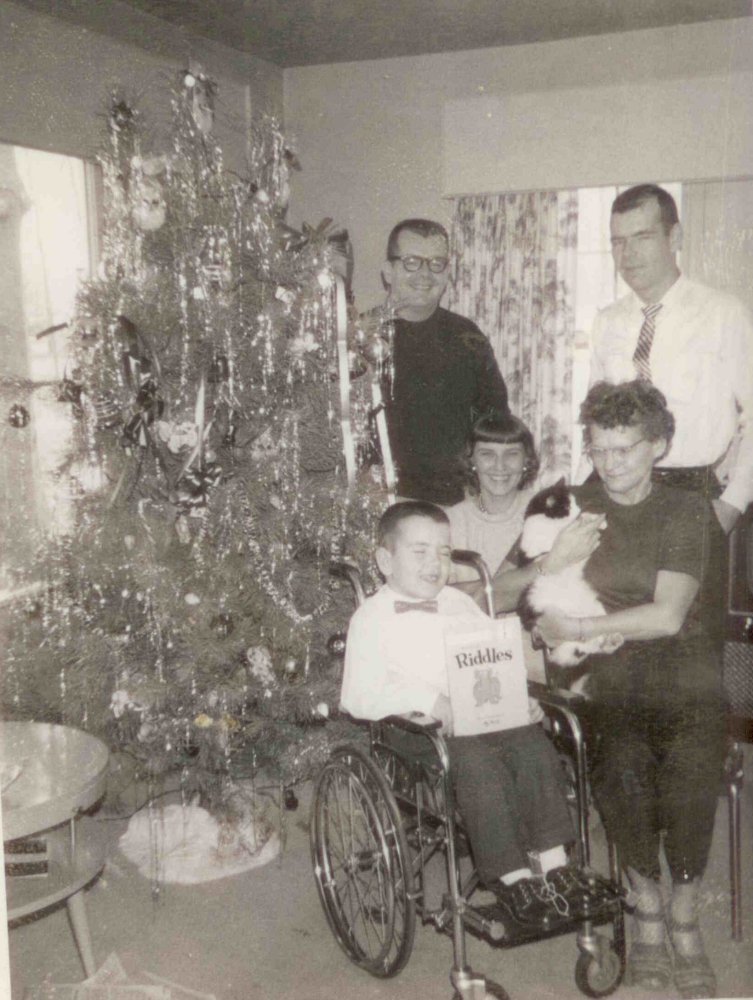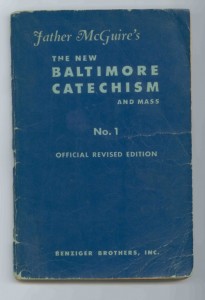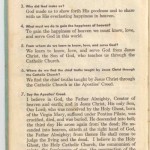Today I was watching a podcast on Facebook live from one of my favorite YouTube channels Father Roderick Vonhögen. He is a priest who lives in the Netherlands who not only talks about theology and religion online but is probably more famous for his reviews of sci-fi movies such as Star Wars and Marvel comic movies. He also does live online streaming of him building Lego models. So he’s a real sci-fi nerd who just happens to be an ordained priest.
One of the features of his weekly video podcast is he answers questions about the Catholic faith and one that he addressed in today’s show was why can’t we have online confession via Skype, FaceTime or other methods since we are dealing with the virus by streaming Mass online?
I’ve been a catechist who taught RCIA at St. Gabriel Church for over 30 years so I thought I would write an article addressing the same issues backed up by some of the comments that Father Rodrick made in his video blog.
Who Can Forgive Sins?
If you’re going to talk about the Sacrament of Reconciliation a.k.a. Confession we need to talk first about the authority to forgive sins in the first place. Father Rodrick cited one of my favorite passages of Scripture about the paralytic man at Capernaum. The story is told in various versions in all three of the synoptic Gospels. Matthew 9:1-8, Mark 2:1-12, and
Luke 5:17-26.
Jesus was teaching in a house in Capernaum and it was so crowded that no one could get in. But there was a paralyzed man and his friends wanted to bring him to Jesus to be healed. They opened a hole in the roof and lowered him down on a mat through the roof so that he could get to Jesus. Jesus says to the man “Your sins are forgiven”.
I can only imagine the reaction of his friends. “We went to all this trouble so that you could cure him of his paralysis and all you will do is forgive his sins?” But the bigger issue was the scandal of that statement itself. For the Jewish people, only God could forgive sins.
Then the scribes* and Pharisees began to ask themselves, “Who is this who speaks blasphemies? Who but God alone can forgive sins?” Jesus knew their thoughts and said to them in reply, “What are you thinking in your hearts? Which is easier, to say, ‘Your sins are forgiven,’ or to say, ‘Rise and walk’? But that you may know that the Son of Man has authority on earth to forgive sins”—he said to the man who was paralyzed, “I say to you, rise, pick up your stretcher, and go home.” He stood up immediately before them, picked up what he had been lying on, and went home, glorifying God. Luke 5:21-25
We can understand the confusion of the people there. If you or I do something to offend one another we can offer each other forgiveness but a sin is an offense against God so in their mind only God could forgive a sin. Of course we understand that Jesus is God and was revealing himself to be so by claiming the power to forgive sin.
So why do priests have the authority to forgive sin? Are they equating themselves with God as Jesus did at Capernaum? Of course not. The authority of the Church for forgiveness comes from the words of Jesus himself. In the Gospel of John when Jesus is speaking to the Apostles after he has risen he says to them.
Jesus said to them again, “Peace be with you. As the Father has sent me, so I send you.” And when he had said this, he breathed on them and said to them, “Receive the holy Spirit. Whose sins you forgive are forgiven them, and whose sins you retain are retained.” John 20:21-23
https://www.biblegateway.com/passage/?search=John+20:%2021-23&version=NABRE
The authority of the church also comes from the statements of Jesus “I will give you the keys to the kingdom of heaven. Whatever you bind on earth shall be bound in heaven; and whatever you loose on earth shall be loosed in heaven.” Matthew 16:19. Also see Matthew 18:18 which similarly gives authority to the Apostles.
Technically the bishops, as the modern day successors of the Apostles, have this authority to forgive sins on behalf of God through the power of the Holy Spirit. For practical reasons long ago this authority was also handed on to the priests because it’s impractical for bishops to hear everyone’s confessions.
Reconciliation is Personal
All of the Sacraments are outward signs of God’s grace and are created as a kind of reenactment of things that Jesus actually did. He personally forgave peoples sins. He didn’t just send a messenger and say “Tell that guy I forgave him.” The power of God to impact our lives is so substantial that we cannot experience it fully through words alone.
The Traditions of the Church as expressed in the Mass and Sacraments are designed to be sensual experiences. We feel the waters of Baptism cleansing us. We taste and see the goodness of the Lord when we receive him through the Eucharist. In Confirmation and Anointing of the Sick we feel the anointing of Holy Oil. Ideally in a face-to-face celebration of the Sacrament of Reconciliation the priest actually lays his hands upon you in a gesture of forgiveness while he prays the Words of Absolution. The reforms of Vatican II promoted face-to-face confession so that this could be a more sensual experience but even in the privacy of an old-fashioned confessional behind a screen, you still feel the presence of another human being reaching out to do an offering you God’s forgiveness.
For the proper celebration of this Sacrament we need the closeness of one human being to another to experience God’s love and forgiveness in a very special way. Using online methods, phone calls, emails or whatever just does not give the full experience of the loving forgiveness that is capable to experience in a more personal setting.
Someone asked Father Rodrick what if a person is in isolation for medical reasons. He said that the Church allows for the Sacrament of Reconciliation to be celebrated through a glass door or other medical partition even with the use of an intercom as long as the two can see one another and absolute privacy can be maintained. Father Rodrick said that the use of an intercom in such circumstances was no different than a priest wearing a hearing aid. It’s just a method to allow communication more clearly and accurately.
Privacy is Paramount
This leads us to probably the biggest reason why online celebration of the Sacrament of Reconciliation is not permitted. The Seal of Confession is absolutely essential. What is said to the priest during confession cannot ever be revealed under any circumstances. Priests have gone to jail to protect the privacy of what was told to them in confession. Violation of the Seal of Confession is so serious that a priest would be automatically excommunicated from the church. It doesn’t even take a trial involving the Pope. It’s just automatic.
Not only can a priest not reveal anything that was said during confession but they cannot act upon it in any way. A priest friend once told me that in the seminary when discussing the privacy of confession one of the seminarians asked their teachers “What if someone confesses to me that they put a bomb under my bed? Do I have to sleep in that bed?” The teacher answered “Tell the person that their penance was to remove the bomb and then pray like you never prayed before that they actually do it.”
While this is somewhat of a contrived scenario, Father Rodrick mentions in his podcast that if someone confesses for example that they have murdered and may murder again, the priest can withhold absolution and instruct the penitent to turn themselves in. That’s the most that the priest can do.
Back to the topic at hand… No matter how secure our Internet connection might be, we cannot completely guarantee 100% privacy that is a fundamental requirement for the Sacrament.
I recently saw an interview on YouTube with a speech therapist who practices over the Internet giving lessons to children and adults using WebCams. She is under strict requirements to use the highest levels of encryption in order not to violate HIPPA privacy requirements. But even the triple encryption offered by Zoom Pro software that she uses would not be safe enough for this most serious privacy needs.
The Church keeps this level of privacy because they want people to be completely free and unafraid to seek the forgiveness of God through this Sacrament. If you thought for a moment that something you might confess could ever be revealed, you would be reluctant to confess it. Your soul would be endangered because the Church didn’t take your privacy seriously enough. The Church won’t let that happen.
About Online Mass
People often ask “Why do I need to go to church when I can pray just as well at home by myself in private?” Our late former pastor Father Larry Crawford always had a great response to that question. He would say “You are probably right however believe it or not we don’t go to church to pray.” After a typical look of shock would go across the persons face he would then continue. “We go to church to worship”.
He would go on to explain that prayer and worship were two different things. Prayer is a conversation with God and we do indeed pray throughout the celebration of the Mass. However the celebration of Mass is a communal expression of worship. We come together as a community to encounter God.
Trick question for you… When does Mass begin?
Some would say during the opening hymn. Others would say that because we were taught in the old days that you had not fully attended Mass unless you experienced the three central parts of the Mass the offertory, the consecration, and the Eucharist that it didn’t count so they would say at the offertory. My late mother who was liturgy chairman at St. Gabriel for over a decade said otherwise. She said “Mass begins in the parking lot”. and many theologians would agree with her. We encounter God three ways at Mass. God is present in the Eucharist. God is present in his Word during the Scripture readings. But God is also present in the community. Jesus told us that whenever two or three gather in His name He is there in our midst. Matthew 18:20
It is this coming together as a community where we feel God’s presence through the love of our fellow members of the Catholic Family of St. Gabriel Church. St. Paul tells us that we all have God-given gifts and talents to contribute to the world and together. “Now you are Christ’s body, and individually parts of it.” 1 Corinthians 12:27. There is a hymn titled “You are the only Jesus some will ever see”. As members of the Body of Christ we make Jesus present to one another and the world.
By utilizing Facebook to live stream our worship, we still hear the Word of God in Scripture and to a limited extent we feel the presence of our community coming together. While we are not able to receive the Eucharist, given the situation two out of three isn’t bad.
During this crisis we have to maintain social distancing for our own health as well as the health of our loved ones. We are not able to fully experience the joy of coming together as a community. We don’t get to see the faces of our fellow parishioners or greet them with a hug or a handshake. However I am greatly inspired by the number of people who have recently joined our Facebook group. The comments during the live stream of our Mass and other prayer services shows that our connection as a community is stronger than any virus or other force that tries to keep us apart. The Apostle St. Paul wrote the letters that are an important part of our New Testament so that he could stay in touch with the communities that he could not visit frequently. Some of these letters had actually been written while he was imprisoned. He used what he could to keep the communities he founded together in Christ and we use technology today to maintain our connection to one another.
We have had our Facebook group for many years but it has been greatly underutilized. However in the past few days hundreds of new members have signed up. It is so heartwarming to see us reach out to one another in this way. Let us all let this crisis give as a longing for community and for the loving presence of our fellow parishioners. Let us all continue to make use of every means of communication to stay in touch with one other even after the crisis passes.
Let us pray for all of those affected directly by this terrible illness, for those who are out of work and struggling because of it, and those who are even more isolated than ever. May we seek every opportunity to spread the Gospel message and God’s love in whatever ways we can.




